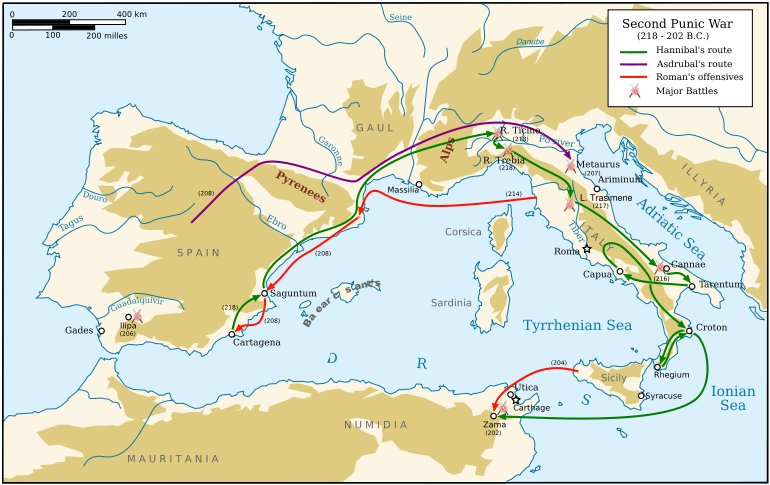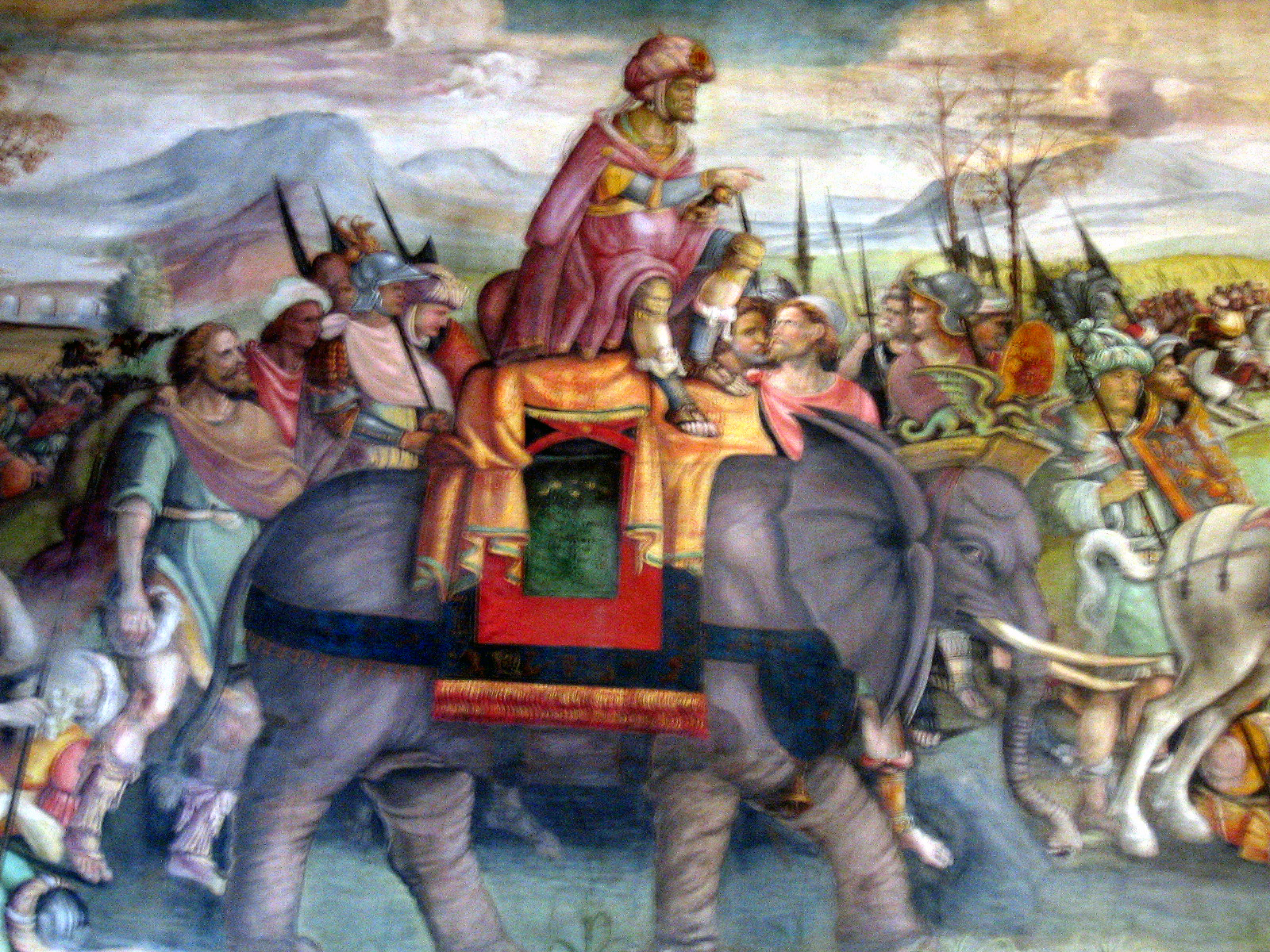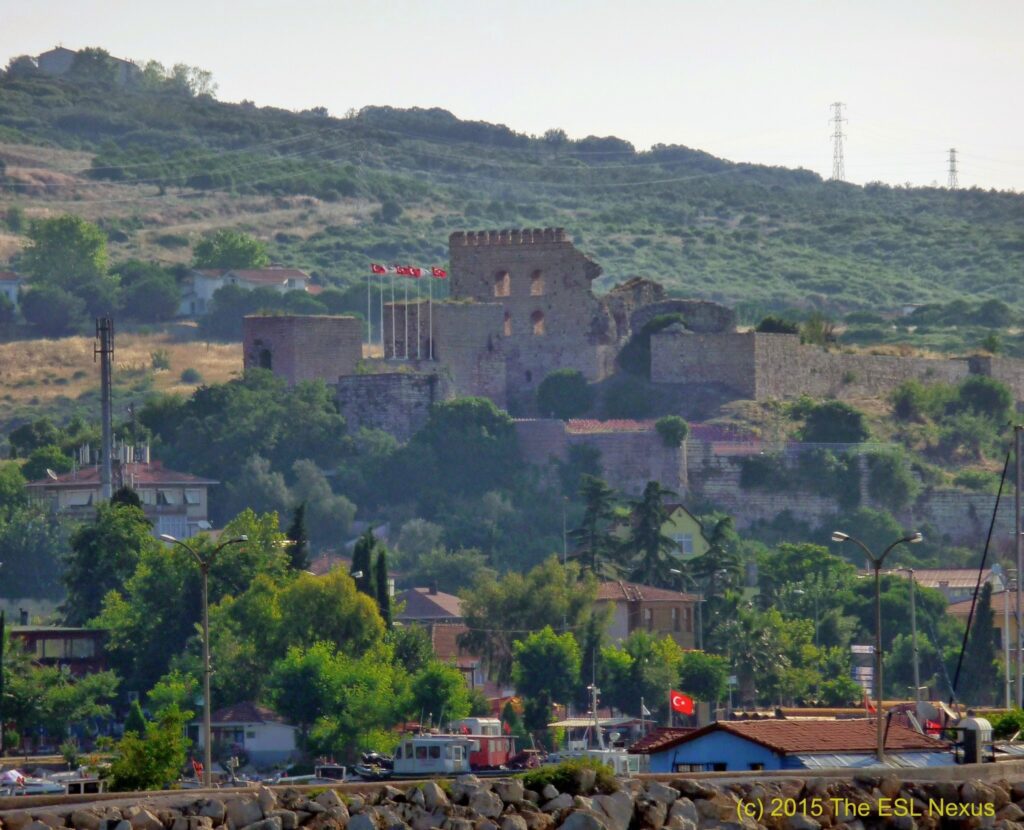Hannibal, the Carthaginian general, was based in Cartagena in Iberia and from there, set out to conquer Rome. In 218 B.C., he crossed the Pyrenees and the Alps with his army and 37 war elephants. Crossing the snow-covered mountains with elephants had never been done before and the army met with difficulties such as rivers that needed to be forded and hostile tribes that needed to be placated. However, Hannibal persevered and eventually reached the outskirts of Rome.
 |
| Hannibal’s invasion; source: Wikimedia Commons |
For most of my public school teaching career, I had to create my program of work myself. Juggling nine different grade levels when I was teaching K – 8th grades was quite tricky and time-consuming; perhaps it wasn’t as massive a task as crossing the Alps but it, too, had to be done and so it got done. When I began teaching in a public school, I was the first ESL teacher there and had to build the program from the ground up; I quickly acquired needed textbooks, materials and supplies from various sources. I found the most effective ways to reach parents–coming from teaching adults, working with parents was new for me. I worked hard to establish productive relationships with the teachers and other staff in the school, most of whom had never worked with an ESL teacher before, as Hannibal worked to establish peaceful relationships with the tribes whose lands he traversed on his journey to Rome. I made my classes rigorous but enjoyable as best as I could.
 |
| Carthaginian war elephants; source: Wikimedia Commons |
Hannibal never actually conquered Rome, though. He died around 183 B.C. and many Turks believe he is buried near present-day Istanbul. The photo below, which I took in 2009, shows his purported tomb site. It is on the grounds of a military base so, unfortunately, I was not able to go and visit it.

Nevertheless, as an ELL educator, I find much I can relate to regarding the life of Hannibal.




